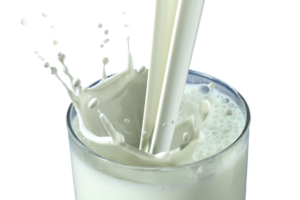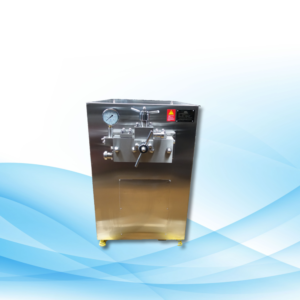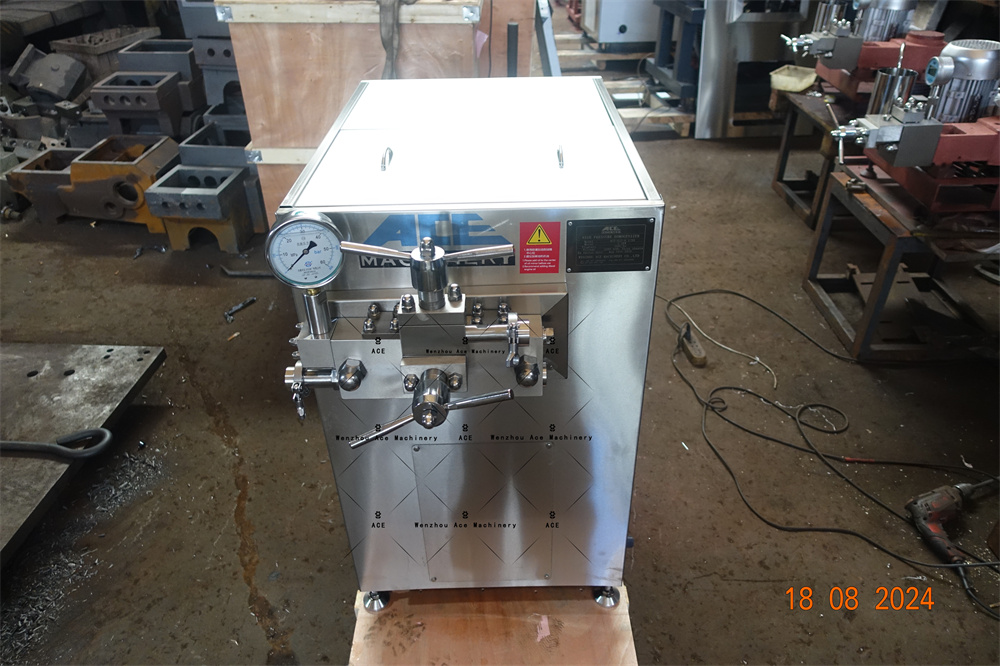What Does Homogenize Milk Mean?
Homogenized milk is a kind of milk that has been processed in such a way as to ensure that the fat molecules are evenly distributed throughout the liquid. This prevents the cream from separating and rising to the top, giving it a uniform texture and taste.

What Is Homogenized Milk?
Homogenized milk is produced by passing milk through small holes at high pressure, which breaks down fat molecules into smaller sizes that are equal. This creates an emulsion where fats remain suspended in solution, thus every gulp has the same creamy consistency.
Is All Milk Homogenized?
Not all types of milk are homogenized. Although most commercially available milks are homogenized for longer shelf life and ease of use by consumers, some may be sold non-homogenized, especially organic or specialty varieties where there can be seen a layer of cream on top which needs to be mixed before drinking.
History Of Homogenization
When Was Homogenized Milk Invented?
The process for homogenizing milk began during the late 19th century, with widespread adoption occurring around the early 20th century. This invention transformed the dairy industry because people could now have fresh tasting milk that lasted longer.
Homogenized Milk vs Whole Milk
Whole milk refers to natural state of milk containing all its fat content while when whole milk is homogenized it undergoes same amount of fat but gets distributed evenly through homogenization process resulting into smoother texture though nutritional value remains unchanged.
Why Is Milk Homogenized: Benefits Of Homogeneity
What Happens When You Homogenize Milk?
During homogenization, fast particles are broken down into smaller sizes so they do not clump together and rise up. This makes it possible for them to mix well with other components, improving taste, texture and shelf life of the product.
How Long Does It Last?
Normally, homogenized products have longer shelf lives than non-homogenized ones. This is because fat particles are reduced in size during the process, making them less susceptible to spoilage. However, milk should still be stored properly if its freshness is to be maintained.
Why Homogenize Milk?
Milk Homogenization: What Is It For And Why Is It Important?
The main aim of homogenization is to produce a consistent and stable milk product that is preferred by consumers. It improves the texture of milk, which makes it more enjoyable for drinking or using in cooking. Also, this process prevents cream from separating so that it remains smooth until consumed.
How To Do It
How Can You Homogenize Milk At Home?
A homogenizer machine can be used to homogenize milk. The device works by forcing the liquid through small openings under high pressure, which breaks down fat molecules and distributes them evenly throughout.

Steps In The Process
- Preheating: This involves heating up the milk to make it easier for fats globules to be broken down.
- Homogenization: Here, the milk is passed through a homogenizer where fats are emulsified into smaller sizes.
- Cooling: After being homogenized, the milk needs to be cooled rapidly in order to preserve its freshness.
- Packaging: Finally, once cooled down sufficiently, packaging takes place before distribution begins.
Machine Used For Homogeneity
Milk Homogenizer Machine
The machine used for this purpose is known as a homogenizer, or simply referred to as a homo machine in the dairy industry. It applies high pressure on milk causing it to pass through narrow openings thereby breaking down fat globules, leading to uniformity and stability of the product obtained.
Homogenization in Milk Processing
Milk Industrialization
There are several steps involved in milk processing to ensure that the final product is safe, nutritious and enjoyable for consumers. These include collection, separation, fortification, pasteurization, homogenization and sometimes additional processes such as ultrafiltration and spray drying.
Process of Collecting Milk
Milk is collected from farms and taken to processing facilities, where it undergoes initial testing and filtration to remove impurities.
Centrifugal Separation
Cream is removed from the milk using centrifugal separation, which can then be adjusted to make different levels of fat content, like skimmed milk or cream.
Fortifying
Vitamin A and D are often added to milk in order to enhance its nutritional profile.
Pasteurizing
Milk is heated up to a certain temperature during pasteurization to kill any harmful bacteria present, thus making it safe for consumption.
Homogenizing
As mentioned earlier on, homogenization breaks down fat molecules into smaller pieces, thereby creating a uniform product throughout the whole batch of milk.
Ultrafiltration
This process involves concentrating the milk by removing water and lactose, resulting in a richer product.
Osmosis
Sometimes osmosis may be used in further concentrating the product by removing excess water during milk processing.
Spray Drying
Spray drying is a method used for producing powdered milk where water is removed from the liquid through high-temperature drying.
Processing of Milk in Dairy Industry: Types of Milk Processing
Dairy Milk Processing
Standard procedures such as pasteurization, homogenization and packaging are carried out during dairy milk processing, which leads to various products found at grocery stores.
Buttermilk Processing
Fermenting milk with specific bacteria produces buttermilk, which has a tangy taste and thicker consistency than regular dairy products.
Soda Milk Processing
Soya beans are used in making soya milk, whereby liquid is extracted from ground beans followed by fortification and homogenization.
Almond Milk Processing
Blending almonds with water and straining the mixture creates almond milk, which is a smooth dairy-free alternative.
Skimmed Milk Processing
Cream is removed from whole milk to make skimmed milk, which has low fat content.
Condensed Milk Processing
Water is evaporated from milk and sugar added during condensed milk processing, resulting in a thick, sweet product.
Cow Milk Processing
Pasteurization, homogenization and fortification are done on cow’s milk to produce different types of dairy products.
Coconut Milk Processing
Liquid is extracted from grated coconut meat during coconut milk processing, which can be used for cooking or as a substitute for dairy products.
Goat Milk Processing
Goat’s milk undergoes pasteurization and homogenization similar to that of cows’ in order to create various items.
Aseptic Milk Processing
Milk is sterilized through aseptic processing then packaged under sterile conditions, leading to long shelf-life products.
Ultrafiltration Milk Processing
During ultrafiltration, water and lactose are removed from milk, thereby producing concentrated dairy products.
Equipment Used in Milk Processing (A Complete List of Dairy Equipment)
Milk Pasteurizer Machine
This machine heats up the milk to kill any harmful bacteria, thus making it safe for consumption.
Spray Dryer for Milk Powder
Evaporating water from liquid through high-temperature drying using spray dryers results into powdered form known as milk powder.
Centrifuge Machine for Separating Cream from Whole Milk
Separation of cream from whole milk requires centrifugation machines, which are very important, especially when making different fat content products like creams or skimmed milks.
Milk Bottling Machines
Various containers are used in packaging milk ready for distribution, hence the need for bottling equipment.
Homogenizer Machine for Milk
The homogenizer machine is used to make milk smooth by breaking down fat molecules.
Milk Mixing Tank
Milk mixing tanks are used to mix ingredients and make sure that milk products are the same throughout.
Boiler for Milk Processing
Boilers supply heat at different levels of milk processing, such as pasteurization and sterilization.
Dairy Processing Equipment Manufacturers
Different manufacturers produce dairy processing equipment which is specialized in ensuring high quality and efficient production of milk.
Conclusion
Homogenization is an important process in the dairy industry that keeps milk uniform, fresh, and enjoyable for consumers.






